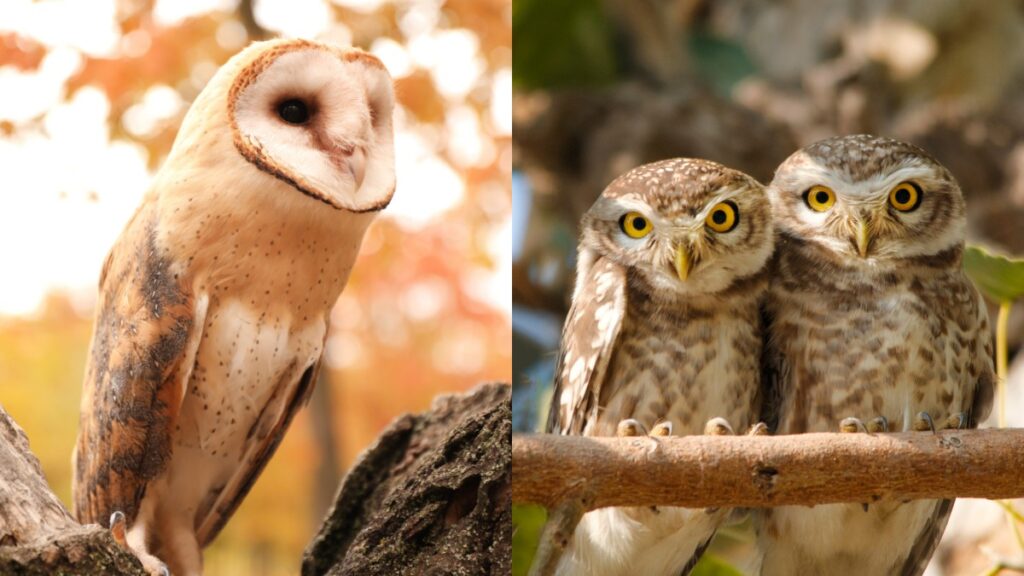Do you consider yourself an aficionado of avian wonders? Perhaps a connoisseur of cryptic creatures of the night? Well, then, prepare to test your knowledge! How many distinct species of owls do you think grace our planet with their presence? The answer might just surprise you.
The world of owls is a tapestry of astonishing diversity, a nocturnally inclined avifauna woven from threads of adaptation, evolutionary finesse, and ecological significance. Unraveling this tapestry requires a meticulous exploration of the various species that comprise the order Strigiformes.
I. A Taxonomic Overture: Delving into Strigiformes
The order Strigiformes is partitioned into two primary families: Tytonidae (the barn owls) and Strigidae (the typical owls). These families diverge in skeletal morphology, behavioral nuances, and global distribution. While the barn owls, with their characteristic heart-shaped facial discs, occupy a relatively narrow evolutionary niche, the typical owls exhibit a remarkable spectrum of adaptations.
II. Tytonidae: The Enigmatic Barn Owls
Barn owls, belonging to the family Tytonidae, are characterized by their distinctive heart-shaped facial disc, long legs, and cosmopolitan distribution. Their nocturnal habits and exceptional auditory acuity make them formidable predators of small mammals.
A. *Tyto alba*: The Common Barn Owl is a widespread species found on nearly every continent. Its adaptability allows it to thrive in diverse habitats, from agricultural lands to urban environments.
B. *Tyto capensis*: The African Grass Owl favors grasslands and wetlands, where it hunts for rodents and other small prey. Its declining population is a cause for conservation concern.
C. *Tyto tenebricosa*: The Sooty Owl, endemic to Australia, inhabits dense forests and rainforests. Its plumage provides camouflage in the dim light of its preferred habitat.
III. Strigidae: A Kaleidoscope of Typical Owls
The family Strigidae encompasses a vast array of typical owls, each exhibiting unique morphological and behavioral adaptations. From diminutive pygmy-owls to imposing eagle-owls, this family showcases the incredible evolutionary plasticity of the owl lineage.
A. *Bubo virginianus*: The Great Horned Owl, a formidable predator, is found throughout North and South America. Its characteristic ear tufts and powerful talons make it an apex predator in many ecosystems.
B. *Strix varia*: The Barred Owl, a denizen of eastern North American forests, is known for its distinctive “who cooks for you? who cooks for you-all?” call. Its expanding range poses a threat to the endangered Spotted Owl.
C. *Aegolius funereus*: The Boreal Owl, a secretive inhabitant of northern forests, specializes in hunting small mammals under the snow. Its facial disc acts as a parabolic reflector, amplifying subtle sounds.
D. *Athene noctua*: The Little Owl, a familiar sight in Europe and Asia, is often associated with wisdom and knowledge. Its diurnal activity and adaptability have allowed it to thrive in human-modified landscapes.
E. *Otus scops*: The European Scops Owl, a diminutive species, is known for its cryptic plumage and insectivorous diet. Its migratory habits take it to Africa during the winter months.
F. *Ketupa zeylonensis*: The Brown Fish Owl, found in South Asia, specializes in hunting fish and crustaceans. Its unfeathered legs and sharp talons are adaptations for aquatic foraging.
G. *Pulsatrix perspicillata*: The Spectacled Owl, a resident of Neotropical rainforests, is distinguished by its dark facial mask and pale “spectacles.” It preys on a variety of mammals, birds, and reptiles.
IV. Size Matters: From Elf Owls to Eurasian Eagle-Owls
The size disparity among owl species is truly remarkable. The Elf Owl (*Micrathene whitneyi*), a diminutive resident of the southwestern United States and Mexico, barely reaches 5 inches in length. In stark contrast, the Eurasian Eagle-Owl (*Bubo bubo*), a formidable predator of Europe and Asia, can attain a wingspan of over 6 feet.
V. The Auditory Acumen of Owls: A Symphony of Silence
Owls possess an unparalleled auditory system, enabling them to detect and localize prey with extraordinary precision, even in complete darkness. Their facial discs act as parabolic reflectors, funneling sound waves towards their asymmetrically positioned ear openings. This asymmetry allows them to triangulate the source of a sound with remarkable accuracy.
VI. Conservation Conundrums: Protecting Our Feathered Friends
Many owl species face a multitude of threats, including habitat loss, pesticide contamination, and climate change. Conservation efforts are crucial to ensure the long-term survival of these magnificent creatures. Protecting and restoring suitable habitat, reducing pesticide use, and mitigating the impacts of climate change are essential steps in safeguarding owl populations.
VII. The Grand Tally: How Many Species Reign?
Estimates vary slightly depending on taxonomic revisions and ongoing research, but the consensus currently places the number of recognized owl species at approximately 250. This figure underscores the remarkable diversity within the order Strigiformes and highlights the ongoing need for taxonomic clarification and conservation efforts.
VIII. A Continued Fascination: Unveiling the Mysteries
The study of owls continues to captivate scientists and nature enthusiasts alike. Their enigmatic behavior, specialized adaptations, and ecological significance make them a fascinating subject of inquiry. As we delve deeper into the world of owls, we gain a greater appreciation for the intricate web of life and the importance of protecting these magnificent creatures for generations to come.
